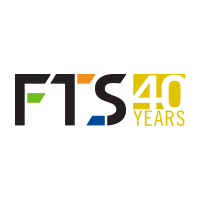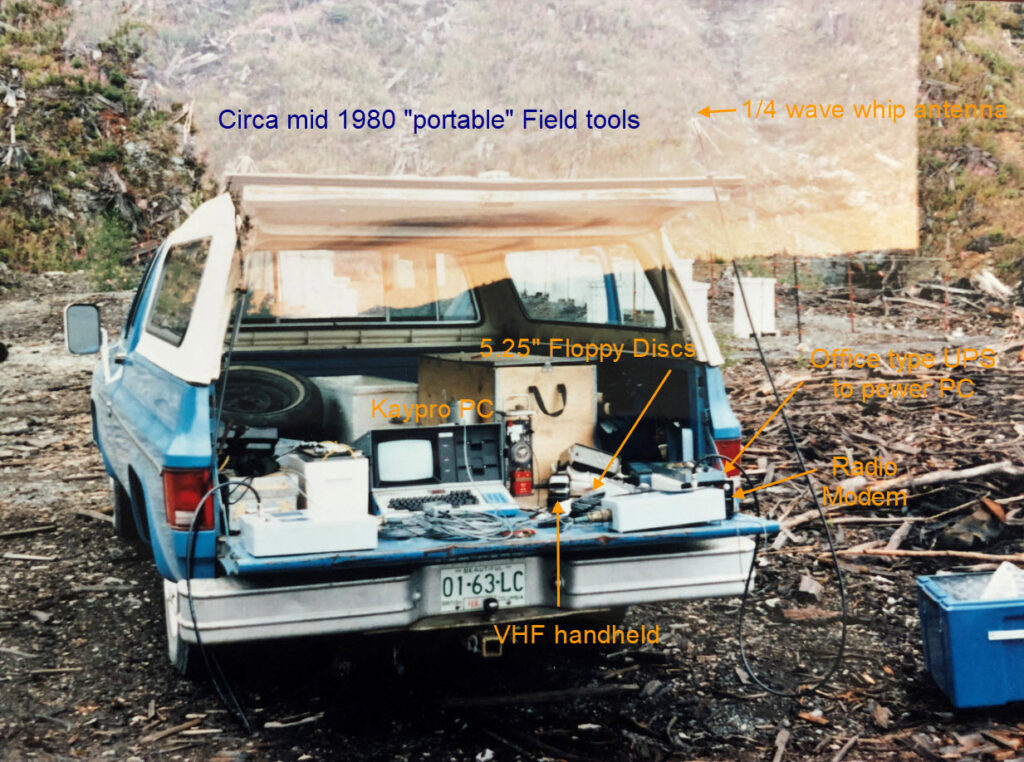The business consultants said there was no market for the product, yet today FTS sells environmental monitoring solutions worldwide, counts millions in sales, employs over 75 people and is celebrating 40 years of reliability and innovation!
You have to wonder how the business consultants got it so wrong in 1980. Perhaps they didn’t grasp the importance of remote environmental data monitoring. Maybe they didn’t understand the power of emerging technology. They almost certainly didn’t anticipate the never-say-die attitude of the company’s founder, Bill Cave, and those who have followed him.
It was the late 1970s when Cave first imagined automating the collection of weather data by marrying radio telemetry to remote electronic monitoring stations. As a researcher with the Canadian Forest Service, he knew the systems were needed. Certain in his vision, he began developing his first prototypes in the basement of his home in Victoria, Canada and by 1980 he was taking out a $30,000 mortgage on his home to incorporate FTS.
“He had two formal business evaluations done on his business plan,” says Brian Bolton, who bought FTS with Kevin Bradley in August 1997. “Both concluded that there was no market for his idea, but that didn’t slow Bill down. He just went ahead and started the company anyways.”
One of Cave’s first employees was Roger Williams, a physics lab instructor from the University of Victoria whom he recruited to build the first FTS dataloggers.
“My initial workspace was in Bill Cave’s basement,” remembers Williams. “He had a nice house at the top of a bluff and the view out the windows was just trees. I was actually the third employee. Bill already had a person building the mast packages and doing the shipping, and another assembling the circuit boards.”
The first FTS circuit board layouts were done with transparent mylar film and transparent red and blue tapes on a light table. Each color represented one side of the finished circuit board, top and bottom. If it was necessary to make corrections a year or so later, the existing taping had to be checked very carefully, as the cut ends of the tape would sometimes curl up during storage and cause problems in the new circuit board.
“Dennis Watkins was hired to develop radio telemetry for the dataloggers,” says Williams. “The initial design was at 1200 baud, and had over-the-air error correction, which was a fairly new technology at the time. All the FTS telemetry and protocols were derived from this initial design until they were replaced a few years ago. We slowly added employees, grew out of the basement, and rented a former bakery for the assembly and shipping of the dataloggers.”
By 1984 FTS had sold over 200 weather stations across Canada, and by 1990 stations had been installed in over 900 locations across Canada and the United States. This year the company has around 5,000 FTS stations transmitting globally.
Still, FTS has faced its share of challenges over the years. In 1990 sales floundered as the world entered a new recession, and the company found itself in a serious bind. Kevin Bradley remembers that uncertain time.
“I had moved to Victoria in early 1989, and I was basically working for FTS at the Board of Directors level in a consulting role,” says Bradley. “We decided to hire a new CEO, and ultimately we recruited Brian Bolton.”
Over the next three years Bolton oversaw a successful period of growth for FTS as the company expanded into several new markets internationally. After navigating some difficult waters, he then decided to step out of the CEO role in 1993.
“Brian and I started looking to recruit a new CEO, and he planned a six-month trip around the United States with his family,” recounts Bradley, laughing about it now. “We finally agreed to hire somebody, but at the eleventh hour the candidate called us to say, sorry, I can’t come to FTS. Brian already had his holiday planned, so I said okay, I’ll step in. We tried to recruit again when Brian came back, but I ended up being the CEO for the next three and a half years.”
By 1997 seven years had elapsed since Bolton’s arrival, and both he and Bradley had taken turns being the CEO. That’s when Bradley proposed to Bolton that they buy the company themselves. The purchase was done and dusted—then the tax authority announced that FTS would be getting a technical audit. It was a harrowing experience.
“By the time they finished, they decided that there was five percent of our project that they didn’t like,” says Bolton, remembering the sense of relief that he and Bradley later felt. “In the end we only lost five percent of the tax refund and it was no big deal.”
Since that time, FTS has grown steadily in sales, reach, and reputation in the environmental monitoring industry. Those working with the company today express pride in being part of its culture and reputation.
“It’s interesting to be involved in a company where every year things are getting bigger and better,” says FTS Chief Technology Officer Phil Bartlett, who has been with the company since 1994. “We’ve created a formula that works, and we’ve continued to grow organically more than anything. Some companies bloom very early and then fade out of existence pretty quickly—they’ve got a sharp ramp up and a sharp ramp down—but we’ve been slow and steady for the whole life of the company.”
Steve Walker, FTS Director of Manufacturing, is one of many who point to the importance of the company culture. “FTS has always just been a nice place to work,” says Walker, who has been with FTS for just over 20 years. “It’s always had a nice culture to it, and what we do is also pretty cool. Forest fire monitoring, field work, water quality stuff—it’s just an area of work that feels like you’re making a difference in the world and in people’s lives.”
Walker’s thoughts are closely echoed by Phil Jones, who has been with the company for 35 years and is now FTS Director of Planning. “We kind of serve ‘feel good’ markets,” says Jones. “We’re selling products that help serve the emergency preparedness and response community. I’m thinking along the lines of the fire weather business, and the environmental natural resources monitoring customers as well—water and other resources tracking—those are two sectors that you can feel good providing products and services to.”
Beyond a great company culture and the job satisfaction of its people, FTS has generated a lot of fun anecdotes and memories among the staff, both work-related and otherwise.
“In the early days when we were a much smaller company—I think when I started, we had fifteen people—we used to do an annual ski trip, and it was always a hoot,” recounts Bartlett. “A favourite memory on the technology side was when we developed our own satellite transmitter. To that point we had been using someone else’s technology, then we developed our own, and I think that really changed the company.”
“One of my favourite memories is going into the Glacier National Park wilderness area in northwestern Montana on horseback and installing fire weather monitoring equipment,” says Chris Lindsay, National Sales Manager for Canada, Mexico, and Australia. “My other great memories include working with the Comisión Nacional del Agua in Mexico to establish their long-term climate and meteorological monitoring network and working with all of the various states and territories in Australia to develop their wildfire monitoring operations.”
FTS Applications Engineer Mike Gaube had a brief stint at the company as a University student in the 1980s before returning 17 years ago. He fondly remembers being part of the small group who developed the FTS Axiom Datalogger and the RMX radio modem. But one of his favourite memories remains his first job interview as a University student.
“It was a Friday morning, and I was wearing a suit, and Fridays were always Hawaiian shirt day at FTS,” says Gaube. “So, Bill Cave said to me, ‘I’ll hire you under one condition—that you never wear that suit again.’”
Humour and humanity have always been hallmarks of the FTS culture, and they have probably contributed as much to the company’s success as the technology itself. The other major factor is almost certainly the commitment to getting things right with customers.
“It was always about the customer,” says Bradley. “All organizations say that, but we truly had that down, because everyone knew that was the right thing to do. If the customer needed something set right, we were going to do it. If there were any little problems at all, the company would just take care of it.”
In 2018 Bradley and Bolton made the decision to sell FTS to Advanced Environmental Monitoring (“AEM”), recognizing that FTS would need a significant infusion of capital if it was going to make the leap into the next level of global product and market development.
“We knew the company would continue to be successful, but to get over the hurdle of the next stage of growth, it just needed deeper pockets than Kevin and I had,” says Bolton. “They’ve been a very good owner-partner for the company, as they’ve brought in fresh capital and a lot of strong business relationships for the company.”
David Reid who has been FTS CEO since 2015 has seen a large amount of growth not only in FTS long-standing fire weather industry, but has helped the company expand into Hydrology, Air Quality and Utilities markets. “Although I have missed working with Brian and Kevin, having the AEM network behind FTS has allowed us to take further steps to solidify our company as a large player in new industries. Our partnerships with our sister companies allows us to provide an entire spectrum of products to our customers.”
“AEM is a collective of innovative environmental monitoring companies that work together to provide the best solutions to our customers,” says Rodney Smith, CEO of AEM. “We purchased FTS for its competitive strength in both fire weather and hydrology solutions. In addition to their products and services, their history of innovation and customer-dedicated culture of the employees has also been a great fit with our existing family of companies, and we are excited to have FTS as part of our group.”
What feelings does this stir for Bill Cave more than 40 years since he began building his first weather stations in his basement?
“Let me say that I still feel satisfaction that I was able to build a company that provides good paying employment for a number of people along with job satisfaction and a comfortable corporate culture,” says Cave as he enjoys retirement in 2020. “It’s a bonus that these jobs result in the protection of forests and clean water.”


